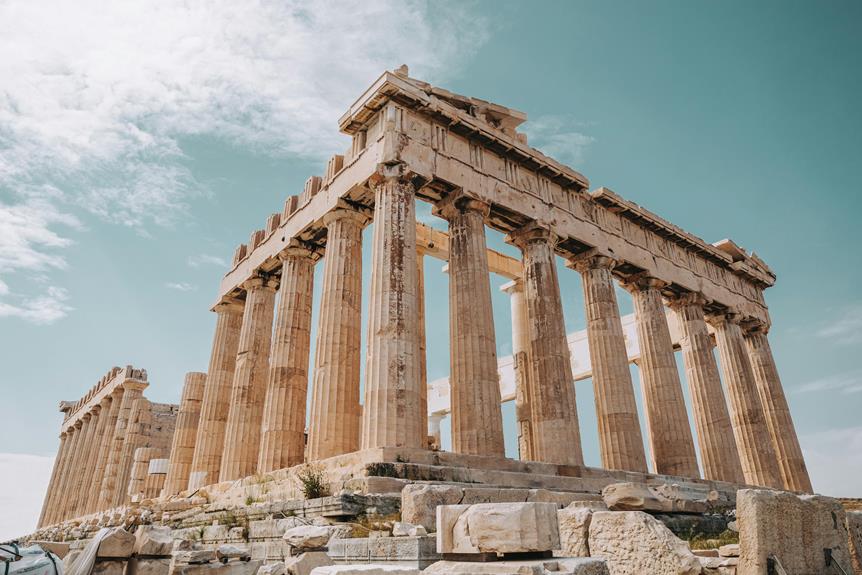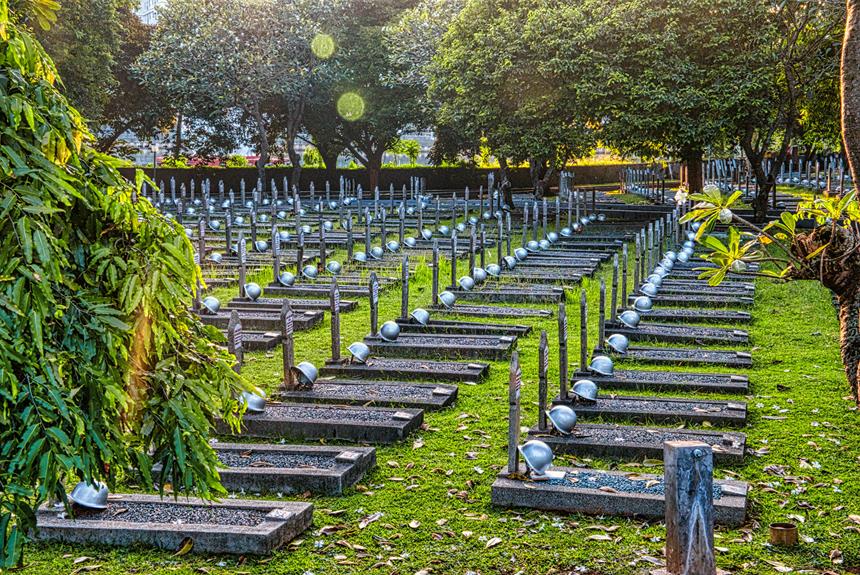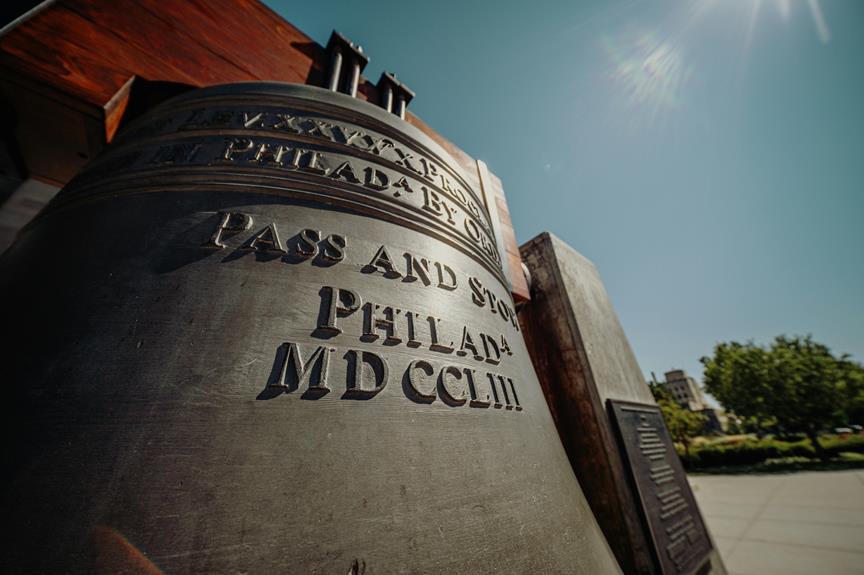Yad Vashem, located in Israel, stands as a powerful testament to the profound impact of the Holocaust on humanity. Its architectural design and meticulously curated exhibitions offer visitors a somber yet enlightening journey through one of the darkest chapters of modern history. By seamlessly blending education with commemoration, Yad Vashem invites contemplation and reflection on the resilience of the human spirit in the face of unimaginable tragedy. This memorial not only honors the memory of those who perished but also serves as a poignant reminder of the importance of remembrance and the pursuit of a more just future.
Key Takeaways
- Located in Jerusalem, Yad Vashem is dedicated to preserving the memory of Holocaust victims.
- The architecture blends modern and symbolic features, symbolizing tragedy and hope.
- Permanent exhibitions honor victims through interactive multimedia and artifacts.
- Yad Vashem hosts memorial events like Holocaust Remembrance Day with powerful ceremonies.
- Diverse educational programs focus on human stories, workshops, and resources for teachers.
Historical Background
Located in Jerusalem, Yad Vashem stands as a poignant memorial and educational institution dedicated to preserving the memory of the millions of Jewish victims who perished during the Holocaust. The historical background of Yad Vashem is deeply intertwined with the atrocities committed during World War II by the Nazi regime. The Nazi persecution of Jews during this dark period aimed at the systematic annihilation of European Jewry through genocide, leading to the murder of six million Jews.
However, amidst the horror and despair, stories of Jewish resistance emerged as a beacon of hope and defiance against the oppressors. Jewish resistance took various forms during the Holocaust, ranging from acts of armed resistance in ghettos and concentration camps to cultural and spiritual resistance that aimed to preserve Jewish identity and dignity in the face of dehumanization. These acts of resistance, though often outnumbered and outgunned, symbolized the unwavering spirit of a people determined to resist oppression and uphold their humanity.
Yad Vashem serves as a tribute to the resilience and strength of the Jewish people in the face of unimaginable adversity. Through its exhibits, archives, and educational programs, Yad Vashem safeguards that the memory of the Holocaust and the stories of Nazi persecution and Jewish resistance are not forgotten, honoring the victims and survivors while educating future generations about the importance of remembrance and the preservation of freedom.
Architecture and Layout
The physical design and layout of Yad Vashem in Jerusalem play a significant role in conveying the solemnity and reverence of this memorial and educational institution dedicated to preserving the memory of Holocaust victims. Architectural design and spatial organization are meticulously planned to create an atmosphere of reflection and remembrance.
| Architectural Design | Spatial Organization |
|---|---|
| Yad Vashem's architecture blends modern elements with symbolic features that honor the victims of the Holocaust. The main building, with its triangular shape and concrete walls, symbolizes both the tragedy and hope for the future. The Hall of Names, a vast cone-shaped structure, is a poignant tribute to the millions of Jewish lives lost during the Holocaust. | The spatial organization of Yad Vashem is designed to guide visitors through a journey of learning and commemoration. The layout facilitates a structured progression through different sections, leading visitors from the historical context of the Holocaust to personal stories of those affected. The deliberate arrangement of exhibits and spaces allows for moments of contemplation and respect. |
Yad Vashem's architectural design and spatial organization work harmoniously to evoke emotions of sorrow, remembrance, and resilience. The physical elements of the memorial serve as a powerful backdrop for the stories and history preserved within its walls, creating a lasting impact on all who visit.
Permanent Exhibitions
Within the walls of Yad Vashem in Jerusalem, the essential exhibitions stand as poignant tributes to the atrocities of the Holocaust and the enduring legacy of its victims. These exhibitions are meticulously curated to honor the memory of the six million Jews who perished during one of the darkest periods in human history. Visitors are met with a profound experience that brings to light the stories of individuals, families, and communities that were affected by the Holocaust.
One of the striking features of the permanent exhibitions at Yad Vashem is the use of interactive multimedia. Through innovative technology, visitors are able to engage with history in a dynamic and immersive way. Interactive displays allow for a deeper understanding of the events that transpired, providing a more personal connection to the stories being told.
Moreover, the exhibitions house a vast collection of Holocaust artifacts that serve as tangible reminders of the past. These artifacts, ranging from personal belongings to historical documents, offer a glimpse into the lives that were forever altered by the Holocaust. Each item holds a story waiting to be heard, a memory waiting to be preserved.
In essence, the permanent exhibitions at Yad Vashem serve as an essential educational tool, ensuring that the horrors of the Holocaust are never forgotten. Through interactive experiences and authentic artifacts, visitors are encouraged to reflect on the past and contemplate the importance of remembrance in shaping a more compassionate future.
Commemorative Activities
Amidst the solemn grounds of Yad Vashem in Jerusalem, a range of commemorative activities are meticulously planned and conducted to honor the memory of those lost in the Holocaust. These memorial events and remembrance activities serve as poignant reminders of the six million Jewish victims and millions of others who perished during one of the darkest periods in human history.
Throughout the year, Yad Vashem hosts various memorial events to pay tribute to the victims of the Holocaust. One of the most significant ceremonies is the annual Holocaust Remembrance Day, where dignitaries, survivors, and visitors come together to commemorate the lives lost. The lighting of memorial candles, recitation of names, and moments of silence create a somber yet powerful atmosphere that underscores the importance of never forgetting.
In addition to these larger-scale events, Yad Vashem also organizes smaller remembrance activities such as educational workshops, guided tours, and art exhibitions. These initiatives aim to engage visitors on a more personal level, fostering a deeper understanding of the individual stories behind the statistics.
Educational Programs
Ensuring a profound and impactful approach to Holocaust education, Yad Vashem in Israel offers a diverse array of educational programs that aim to enlighten visitors about the historical significance and human stories behind the Holocaust. These programs are meticulously designed to honor the memory of the victims and survivors while fostering a deep understanding of the atrocities committed during that dark period in history.
One of the key components of Yad Vashem's educational initiatives is the use of interactive workshops. These workshops provide participants with a hands-on experience that encourages active learning and critical thinking. By engaging with primary sources, personal testimonies, and educational materials, visitors are able to develop a more profound connection to the events of the Holocaust.
To highlight the impact of Yad Vashem's educational programs, the following table illustrates the various interactive workshops offered at the institution:
| Workshop Title | Description |
|---|---|
| Children of the Holocaust | Educational program focusing on the experiences of children during the Holocaust |
| Rescuers and Righteous Among the Nations | Examining the stories of individuals who risked their lives to save Jews during the Holocaust |
| Art and the Holocaust | Exploring the role of art as a form of resistance and documentation during the Holocaust |
| Memory in the Living Room | Interactive session bringing history into contemporary living spaces |
| Echoes and Reflections | Collaborative program with educational organizations to provide teachers with Holocaust education resources |
Frequently Asked Questions
Can Visitors Bring Food and Drinks Into Yad Vashem?
Visitors are encouraged to enjoy refreshments in designated picnic areas, adhering to food restrictions for the benefit of all guests. While bringing food and drinks may provide convenience, it is vital to comply with the guidelines in place to maintain a welcoming environment for everyone.
These regulations guarantee that all visitors can appreciate the site without encountering disruptions or discomfort. Your cooperation is appreciated in creating a harmonious experience for all.
Are There Any Age Restrictions for Visiting Yad Vashem?
While visiting, please bear in mind that there are no specific age restrictions for exploring the exhibits at Yad Vashem. It is crucial to take into account the emotional weight of the content and make sure that all visitors, regardless of age, are prepared for the experience.
Appropriate attire and respectful behavior are expected. Various tour options are available to cater to different interests and sensitivities, providing a thorough and enlightening visit for all.
Is Photography Allowed Inside the Museum?
Photography rules and museum etiquette vary across institutions, impacting visitors' experiences. It is crucial to review the specific guidelines of each museum regarding photography inside their premises.
While some places permit non-flash photography for personal use, others restrict or prohibit it altogether to preserve the exhibits and respect the solemn atmosphere. Understanding and complying with the photography rules guarantees a harmonious visit for all patrons.
Are There Guided Tours Available for Visitors?
Group tours and audio guides are available for visitors seeking a structured and informative experience. Group tours offer a shared exploration of the exhibits, providing insights and opportunities for discussion.
Audio guides offer a self-paced option, allowing visitors to explore further into the content at their own pace. Both options cater to different preferences, ensuring a fulfilling visit for all guests.
How Can Visitors Access Transportation to Yad Vashem?
Visitors can access transportation to the site through various means. Public transportation, such as buses or trains, offers a cost-effective option for those seeking a convenient way to reach the destination.
Alternatively, private taxis provide a more personalized and direct mode of transportation for visitors who prefer a quicker and more flexible journey. Both options cater to different preferences and budgets, ensuring accessibility for a wide range of visitors.
Conclusion
To summarize, Yad Vashem in Israel stands as a poignant memorial to the victims of the Holocaust, honoring their memory and resilience through its unique architecture and educational exhibits.
How can we guarantee that the stories of those who perished are never forgotten, and that the lessons of the past continue to shape our future?


